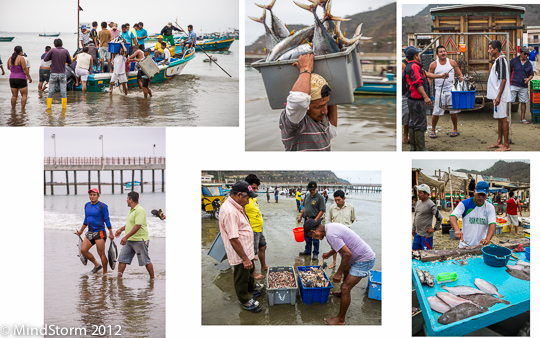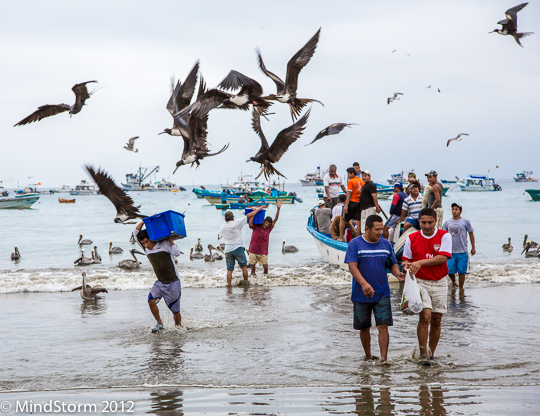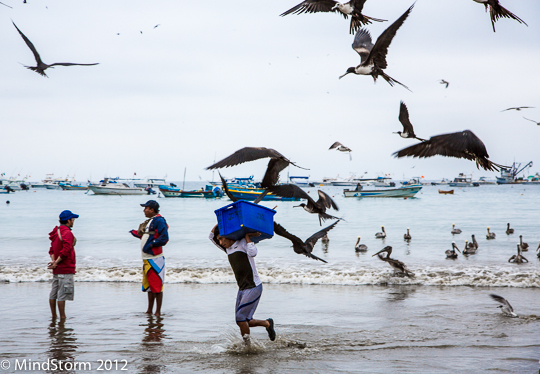Every couple of days we read about another multiple-death car accident, frequently on the road between Cuenca and Quito or Cuenca and Guayaquil. A couple weeks ago, the local Cuenca English newspaper said that car fatalities are the leading cause of death for adults in Ecuador. Other sources place it a little lower on the list, but all put it near the top.
Today we had a first-hand experience of why this is true. Rather than take multiple busses to Guayaquil from Puerto Lopez, we hired a driver — a very good driver as it turned out. He drove carefully, stayed within the speed limit, passed only when safe, etc. As we approached Guayaquil, he recommended (in Spanish, since he spoke no English) that we complete the trip to Cuenca by van rather than bus. Sounded good to us, so he dropped us off at a van shuttle service. The first was booked, but the one next door said they would take us immediately for $12 per person. We agreed…
… and took our lives into our hands in the process! This driver was a madman. We zipped through 30 km/hr zones at 110 — which was only because he had slowed from 120 in the prior 60 km/hr zone. He passed on blind corners in fog so thick you couldn’t see more than 40 feet ahead. He tailgated about 3 feet (I am not exaggerating!) while traveling over 100 through town, then passing at full throttle while he honked at pedestrians to get out of the way. He made the 3-1/2 hour trip in under 2-1/2 hours…
I am here writing this, so I guess we must still be alive. I am still checking periodically to see that I am not floating over my body like some sci-fi ghost…
The morning began much more calmly. I went out to watch and photograph the fishermen coming in for the third day. I can now begin to see the rhythm of the place, and predict better what will happen next.
The fishing boats come in one at a time. Buyers swarm the boats, filling their plastic tubs with fish from the boat. They carry those bins on their shoulder over to the weighing scale, where an official writes down the boat name, buyer, type of fish in the bin, and weight. The runner then gives his full tub to a person working the back of a truck, grabs an empty bin and repeats the process.

After the bulk buyers have what they want, other buyers go in to buy one or two fish. Those are taken to the food tables set up near the road, where they are gutted and skinned. Locals, including those working the fish trucks, either buy the prepared fish to take home, or buy a full fish meal and eat it right there. The boat then reloads gas and heads back out for another load.
Some boats came in with Dorado, while others (apparently bottom trawlers) were loaded with crab, shrimp, and flounders. The Dorado were too big for birds to carry off, so the runners with tubs of those were safe. When runners had tubs of shrimp or small fish though, the story was different. Suddenly the birds would swarm and try to grab the fish from the tub as the man ran as fast as he could. Sometimes a second man would run alongside and beat off the attacking birds. Those without an assistant almost always arrived at the scale lighter than when they left the boat.


